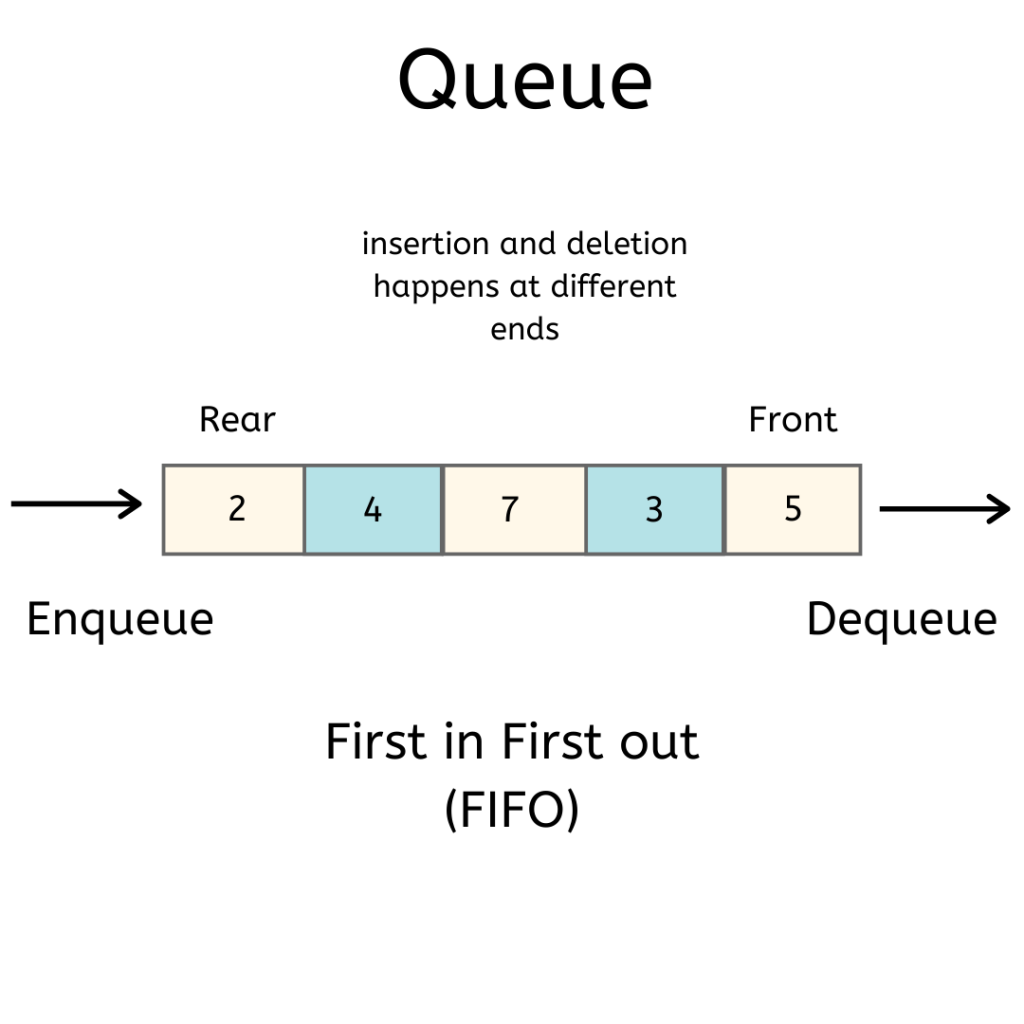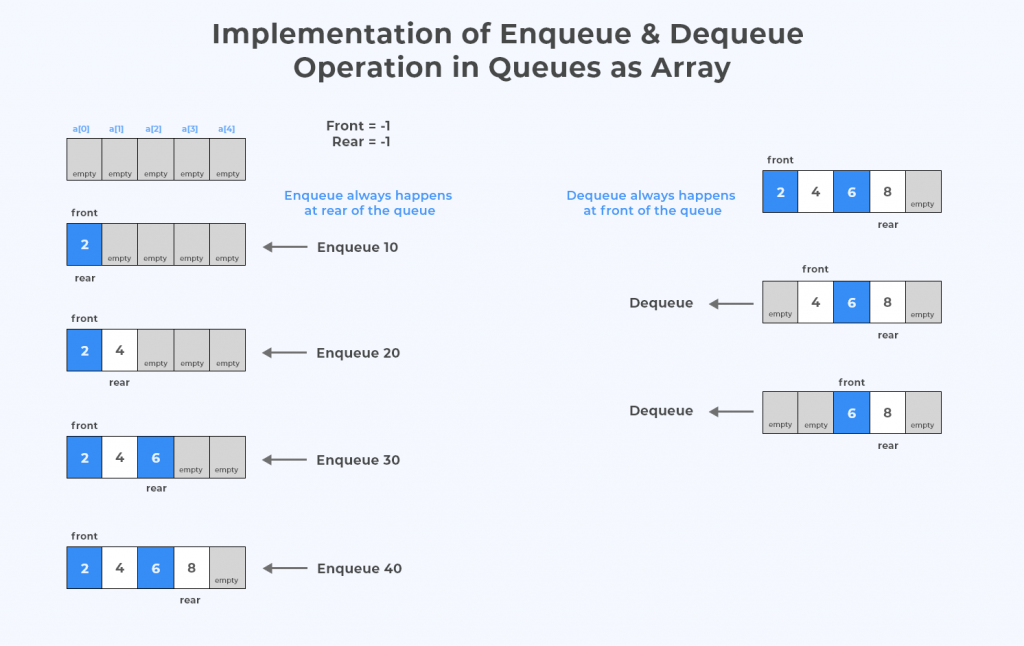Queue ADT Presentation
| Introduction | ||
|---|---|---|
| A Queue ADT is a linear data structure that follows the FIFO (First-In-First-Out) principle. It represents a collection of elements where the addition of new elements occurs at one end, called the rear, and the removal of existing elements occurs from the other end, called the front. Queues can be implemented using arrays or linked lists. | ||
| 1 | ||
| Operations | ||
|---|---|---|
| enqueue(element): Adds an element to the rear of the queue. dequeue(): Removes and returns the element from the front of the queue. isEmpty(): Checks if the queue is empty. | ||
| 2 | ||
| Operations (cont.) | ||
|---|---|---|
| isFull(): Checks if the queue is full (in case of using an array-based implementation). peek(): Returns the element at the front of the queue without removing it. size(): Returns the number of elements currently in the queue. | ||
| 3 | ||
| Array-based Implementation | ||
|---|---|---|
| In an array-based implementation, a fixed-size array is used to store the elements of the queue. Two pointers, front and rear, indicate the position of the front and rear elements respectively. Enqueue and dequeue operations are performed by updating these pointers accordingly. | ||
| 4 | ||
| Array-based Implementation (cont.) | ||
|---|---|---|
| The main advantage of an array-based implementation is constant time complexity for enqueue and dequeue operations (assuming the array is not full). However, it has a fixed size limitation and may require shifting elements if the array is not circular. Your third bullet |  | |
| 5 | ||
| Linked List-based Implementation | ||
|---|---|---|
| In a linked list-based implementation, each node in the linked list contains an element and a reference to the next node. The front and rear pointers are used to keep track of the first and last nodes respectively. Enqueue and dequeue operations are performed by updating these pointers accordingly. |  | |
| 6 | ||
| Linked List-based Implementation (cont.) | ||
|---|---|---|
| The main advantage of a linked list-based implementation is the dynamic size, as it can grow or shrink as needed. However, each node requires additional memory for the next pointer, and enqueue and dequeue operations have a time complexity of O(1) and O(n) respectively. Your third bullet |  | |
| 7 | ||
| Time and Space Complexity | ||
|---|---|---|
| The time complexity of enqueue and dequeue operations in both array-based and linked list-based implementations is O(1). The space complexity of a queue is O(n), where n is the number of elements in the queue. Your third bullet |  | |
| 8 | ||
| Common Applications | ||
|---|---|---|
| Queues are commonly used in operating systems for process scheduling. They are also used in network communication for managing incoming requests and outgoing responses. Queue data structure is widely used in algorithm design, including breadth-first search and depth-first search. |  | |
| 9 | ||
| Summary | ||
|---|---|---|
| A Queue ADT follows the FIFO principle, with elements added at the rear and removed from the front. It can be implemented using arrays or linked lists, each with its own advantages and limitations. Queues have various applications in operating systems, network communication, and algorithm design. | ||
| 10 | ||




